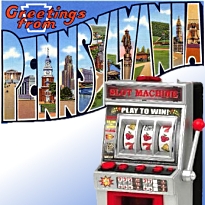 Pennsylvania’s slot machine revenue, once a source of strong economic revenue in the state, is continuing a sputtering trend in recent months. September hasn’t been any better either after posing a six percent decline over last year’s numbers.
Pennsylvania’s slot machine revenue, once a source of strong economic revenue in the state, is continuing a sputtering trend in recent months. September hasn’t been any better either after posing a six percent decline over last year’s numbers.
According to figures released by the Pennsylvania Gaming Control Board, the state’s 12 casinos earned close to $187.8 million for the month, well short of what the casinos earned in September last year when slots revenue broke the $200 million threshold. It’s been a struggle in recent months for the state’s casinos to drum up the revenue numbers it used to produce on a consistent basis.
For the month, 10 of the state’s 12 casinos posted declining revenues, highlighted by Parx Casino in Bensalem, which posted $28.7 million in slots revenue, the most in the state for the month but four percent worse than what it earned last year. Sands Casino Resort Bethlehem didn’t fare much better, either, posting only $22.3 million in revenues from its 3,000 slot machines. Rivers Casino in Pittsburgh also saw its slots revenue take a hit at just $22 million in revenues for the month, although the damage was limited to just a little over one percent.
The biggest loser, at least in terms of decline, was Harrah’s Casino in Chester, which posted only $17.3 million, 15 percent worse than it’s September 2012 figures. Other casinos also posted varying degrees of decline, including Mount Airy Casino in Monroe County with $12.2 million in revenues ($1 million less over last year) and Mohegan Sun at $17.4 million ($1.4 million less).
The only casino to post any sort of gains was Valley Forge Casino, which reported slots revenue of $4.9 million for the month, 14 percent more than its last year’s figures. Valley Forge’s growth isn’t attributed to anything out of the ordinary because it apparently is still growing its customer base after only opening its doors a year ago.
All in all, September represented the tenth consecutive month that the state’s casinos posted a collective decline relative to their previous year’s numbers. That’s a far cry from the first five years where annual revenue growth among its casinos was the name of the game in Pennsylvania, casting concerns that the saturation point in the state has finally been reached.
